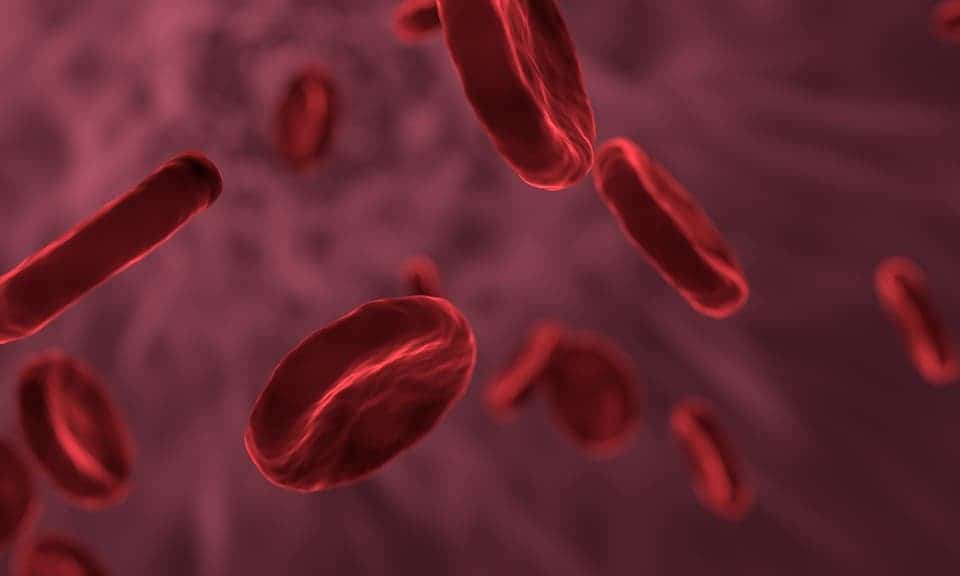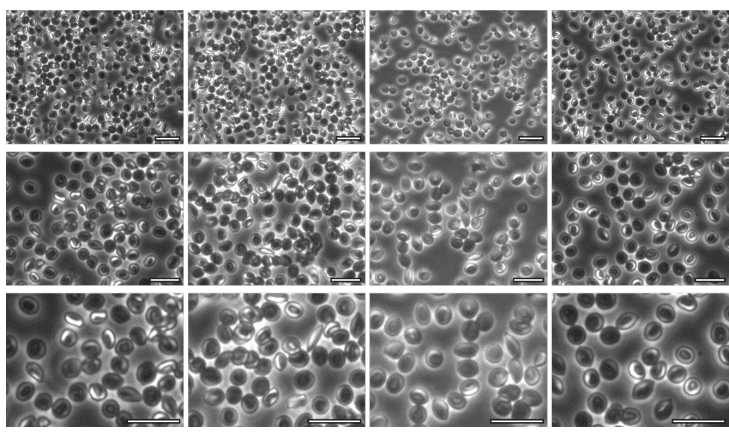
Artificial red blood cells developed so far have always had major shortcomings since they could only partially mimic the critical characteristics of natural cells required for healthy function — until now.
In a new study, researchers at the University of New Mexico have created synthetic red blood cells (RBCs) that mimic all the important properties of natural ones, such as flexibility, oxygen transport, and long circulation times. In fact, the researchers went the extra mile.
Not only are the synthetic red blood cells on par with natural ones, they also have extra features that enable new applications in cancer therapy or toxin biosensing.
Red blood cells give blood its characteristic color and carry oxygen from the lungs to the tissues. They also transport carbon dioxide as a waste product away from the tissues and back to the lungs. About 45% of our blood is red blood cells, the rest is comprised of plasma, platelets, and white blood cells.
These dumbbell-shaped cells are very complex, comprising millions of molecules of hemoglobin, the iron-rich protein that binds oxygen. But it’s not the hemoglobins that were the main challenge in devising synthetic red blood cells.
Flexibility is key for red blood cells, which have to squeeze through tiny capillaries and then bounce back to their original shape.
Biocompatibility is also important, which is enabled by other proteins on the surface on the red blood cells so they don’t get destroyed by immune cells mistaking them for a foreign invader.
In their new study, the researchers at the University of New Mexico first coated donated human red blood cells with a thin layer of silica. On top of these modified red blood cells, the research team also layered positively and negatively charged polymers, before etching away the silica to produce flexible replicas. Finally, the researchers applied another coating to the surface of the artificial cells with a natural membrane. The end result performed as expected — and then some.

RRBCs (left to right) and different magnifications (top to bottom). Credit: ACS Nano.
The synthetic red blood cells had the same size, shape, charge, and surface proteins as natural cells. They’re also flexible enough to squeeze through model capillaries without losing their shape.
During experiments on mice that were injected with the artificial cells, the synthetic red blood cells lasted for more than 48 hours without any obvious signs of toxicity. Natural red blood cells have a lifespan of around 120 days.
In order to demonstrate their cargo-carrying capabilities, the researchers showed they could load the artificial cells with hemoglobin, an anticancer drug, a toxin sensor, or magnetic nanoparticles. This makes them ideal for various medical applications, such as cancer therapy and toxin biosensing, the researchers concluded in their study published in the journal ACS Nano.
“Taken together, RRBCs represent a class of long-circulating RBC-inspired artificial hybrid materials with a broad range of potential applications,” the authors wrote.









